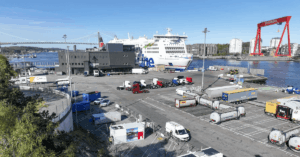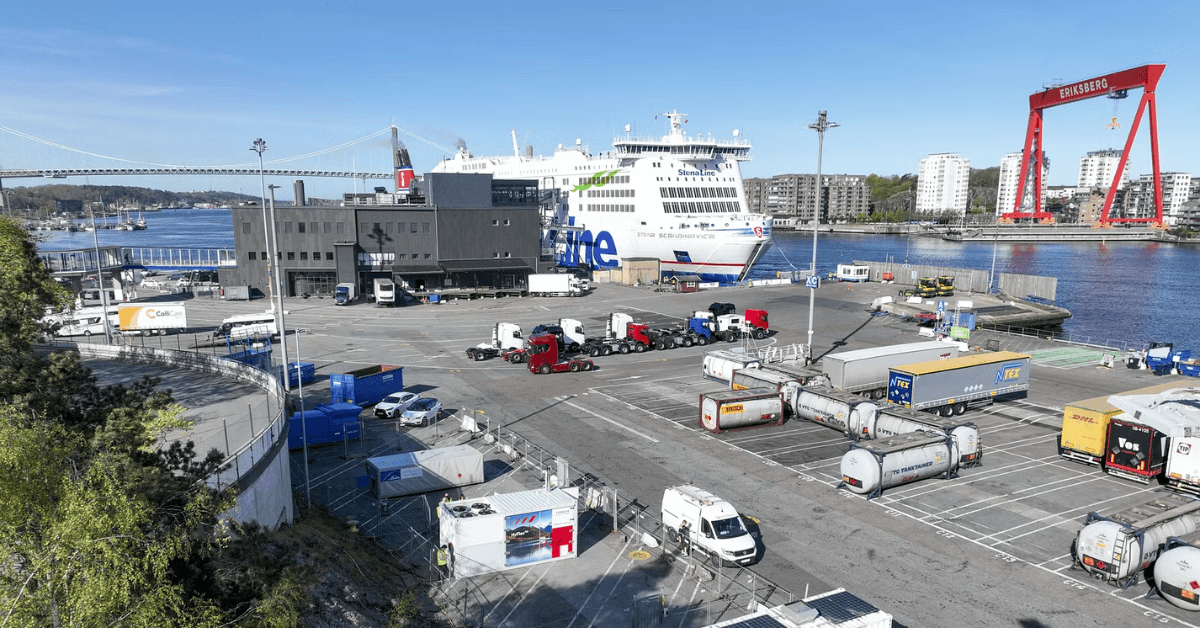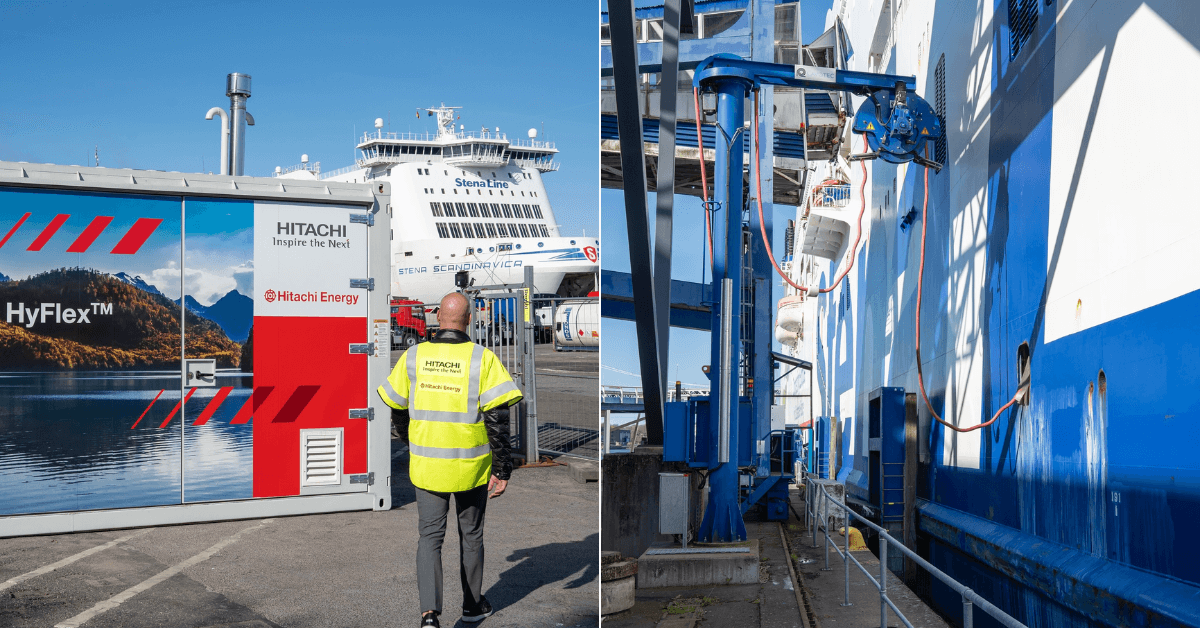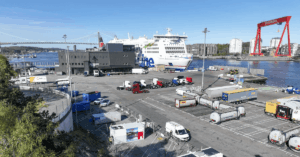
US Imposes Fresh Sanctions On Chinese Refinery & 3 Oil Terminal Operators
May 9, 2025
Seafarers Happiness Index Shows Steady Satisfaction, But Aging Vessels Remain A Concern
May 9, 2025

A pilot project at the Port of Gothenburg has entered its final stage, using a mobile hydrogen generator to supply electricity to ships while they are docked.
The new setup is being tested as an alternative where traditional On-shore Power Supply (OPS) systems are not available or feasible. Providing electricity to vessels at berth instead of relying on their engines can significantly reduce carbon dioxide emissions.
The Port of Gothenburg was one of the early adopters of OPS, having installed the first facilities in the early 2000s. Stena Line’s terminals serving Germany and Denmark were among the first in the world to adopt shore power for ships.
However, many ports across the EU and globally still face challenges in setting up OPS systems. These systems demand significant investment and strong electrical infrastructure- something not all ports can support.
That’s where alternative solutions like mobile hydrogen generators are being explored.
As part of this pilot, a hydrogen-powered generator was connected to Stena Line’s existing shore power setup at the Gothenburg port’s Germany terminal.
The generator used green hydrogen as fuel to provide electricity to two docked vessels, Stena Germanica and Stena Scandinavica, during the trial, which lasted for two weeks.

A senior official at Stena Line shared that the company is open to testing new technologies that can lower emissions in the shipping industry. They believe this pilot proves that ports without established OPS infrastructure can still explore cleaner energy options.
In 2030, new European Union rules will require all passenger and container vessels to use shore power while docked. According to the International Council on Clean Transportation (ICCT), this rule could cut over one million tonnes of CO₂ emissions each year.
The Port of Gothenburg’s Head of Innovation said that hydrogen-based technology could support more ports in meeting this upcoming requirement.
He added that since climate change is a shared issue, it’s important that every port does its part to reduce emissions. The port’s experience with OPS allows it to support projects like this hydrogen trial and help find practical solutions for ports that are still catching up.
The hydrogen generator used in this pilot was developed by Hitachi Energy. The generator’s power modules and fuel cell integration were provided by PowerCell Group, their technology partner. The generator ran entirely on green hydrogen supplied by Linde Gas, a gas production company.
The head of Hitachi Energy in Sweden said the project has shown positive results. He appreciated working alongside companies like Stena Line, PowerCell Group, Linde Gas, and the Port of Gothenburg. He added that the HyFlex generator has wide potential, ranging from construction work to port operations, and supports the transition to clean energy.
Hydrogen is already finding several uses within the Port of Gothenburg. There is a hydrogen refueling station for trucks, and hydrogen-powered work vehicles are being tested.
The same type of hydrogen generator used in this OPS trial was also recently deployed by construction firm Skanska to run heavy equipment during a major expansion project at the port.
According to the European Parliamentary Research Service (EPRS), ships docked at ports within the European Economic Area produce between 6% and 7% of the total carbon dioxide emissions from the shipping sector.
Reference: Port Of Gothenburg
Source: Maritime Shipping News


